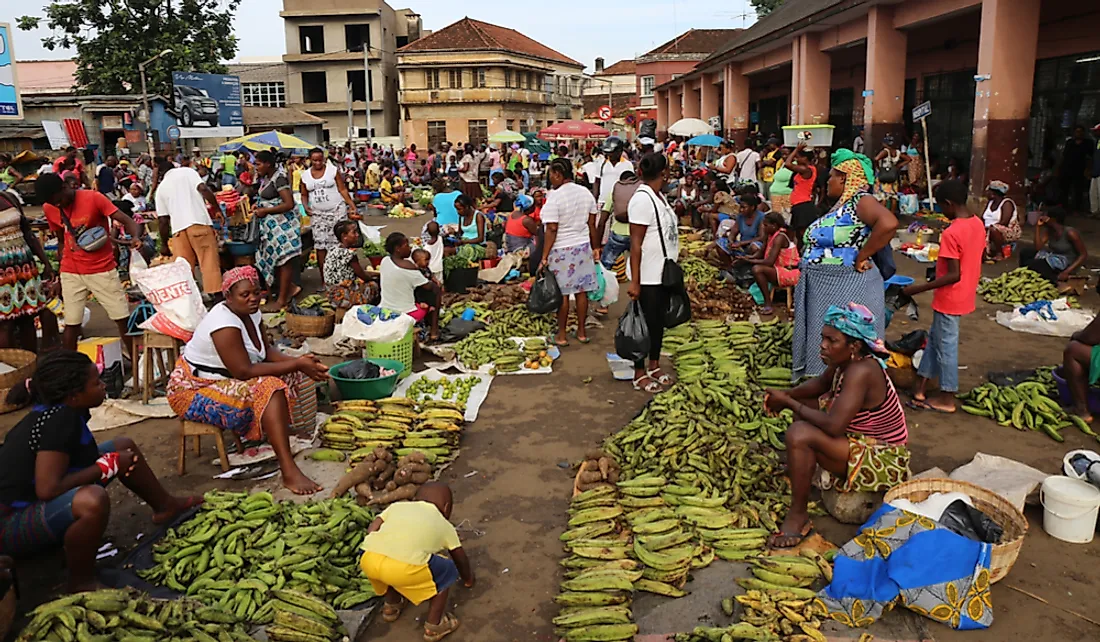The Culture Of Sao Tome And Principe

The island country of São Tomé and Príncipe is located in the Gulf of Guinea. It has two main islands, São Tomé and Príncipe, surrounded by numerous small islands and islets. The country’s culture is heavily influenced by Portuguese and African cultures.
Ethnicity, Language, and Religion in Sao Tome and Principe
Sao Tome and Principe is home to a population of around 204,454 individuals. The mestico, forros (descendants of freed slaves), servicals, and tongas (contract laborers from African countries and their descendants), Europeans, Asians, and others comprise the population of the nation. Portuguese is the official language and is spoken by 98.4% of the population. Cabo Verdian, French, Forro, Angolar, and English are the other major languages. Christianity is the religion of the majority in the nation.
Santomean Cuisine
The Santomean cuisine exhibits influences of African and Portuguese cuisines. The country imports much of its food since local produce is not sufficient to meet the need of the residents. The arable land is only about 8.33% of the total land area. Some food crops like taro, beans, papaya, bananas, and maize are grown in the country. Fish and other seafood are, however, available in plenty. Poultry is also raised.
Staple foods of the Santomean cuisine include seafood, cooked banana, maize, beans, and fish. A number of tropical fruits are also consumed. Hot spices are used to prepare most dishes. Interestingly, coffee is used as a seasoning while cooking some Santomean dishes. Sweet corn and coconut are used to prepare Arroz doce, a traditional breakfast food. A common meal is grilled fish served with cassava, breadfruit, or rice. Another traditional dish is the Calulu. It consists of smoked fish, prawns, okra, eggplant, tomato, and is flavored with a variety of spices. A boiled pork dish flavored with tomato, onion, garlic, spinach, and spices, is also eaten. Chocolate mousse, Canjica (a sweet porridge containing canjica, egg, cinnamon, sugar, and water), aranha, etc., are some popular desserts.
Coconut water, coffee, and tea are the most widely consumed non-alcoholic beverages. Rum, aquardente, palm wine, Ponche (a cocktail), and some alcoholic drinks imported from Portugal are very popular.
Literature and the Arts in the Country
While most written literary works of Sao Tome and Principe are in Portuguese, published literature has also been produced in English, Forro Creole, and Caué Creole. The earliest literary works related to these islands were produced by the Portuguese in the 16th century. Caetano da Costa Alegre’s collection of poems called Visão was one of the earliest literary works recorded in the country. F.J. Tenreiro is the most influential writer from the archipelago. The country also has a vibrant art and craft scene. Landscape painting, wood carving, mask-making, basket-weaving, etc., are some popular art and craft forms from the nation.
Performance Arts in Sao Tome and Principe
The music and dance scene of the country is heavily influenced by the Portuguese and African cultures. Principe is the home to the dêxa beat while ússua and socopé rhythms of Sao Tome are well-known. These rhythms and their dances were influenced by Portuguese ballroom dancing. Leoninos, a band from Sao Tome, popularized popular music in the country. It was founded in 1959. Danco-congo and Tchiloli are other popular dance and music forms of the country.
Sports in Sao Tome and Principe
Football is the most popular sport played in the country. The game is played both professionally and informally throughout the islands of the nation. The country has a national football team that is a member of FIFA and CAF. Other sports and outdoor activities like volleyball, basketball, swimming, etc., are also popular among the Santomeans. The country’s athletes have participated in five Summer Olympic Games but are yet to win a medal at the Olympics.
Life in the Santomean Society
Although the Santomean society was traditionally male-dominated, today the country’s women enjoy greater equality and freedoms than in the past. In the past, men were usually regarded as the breadwinners while women’s roles were confined to household management and childcare. However, women are now employed in various fields like academics, healthcare, and other service-related industries. Women are also represented in politics, administration, and business.
Three types of conjugal relationships are recognized in the country. These include legal marriage, visiting relationship, and cohabitation without marriage. Men often engage with multiple women and maintain several households simultaneously. A significant number of Santomean men and women have several partners over the course of their life.
The size of the Santomean households vary widely ranging from single-individual households to nuclear and extended households. Female-headed families are also seen in the country. Children are greatly valued and a woman typically has five to seven children.
Primary education is free and compulsory. Higher education institutions are absent on the island. Thus, only those who can afford to send their children abroad can provide them with higher education.











